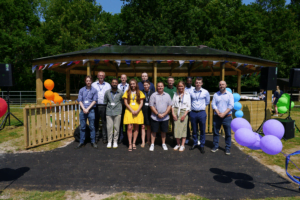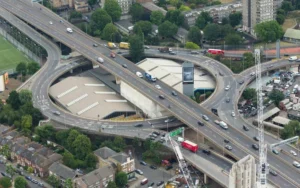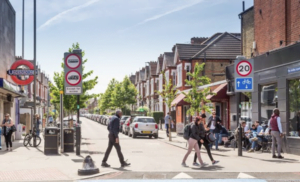Transport for London (TfL) has launched a public consultation to shape future step-free access priorities and improvements on the London Underground network, the first of its kind in 15 years.
The consultation, which runs until 10 February 2022, has been designed to help TfL identify which aspects of making London Underground stations more accessible it should prioritise, to bring the most far-reaching and beneficial impacts and help more Londoners use the public transport network independently.
Over half (51%) of the TfL rail network – spanning Tube, DLR, London Overground, London Trams and TfL Rail services – is now step-free. Since 2016, 21 Tube stations have been made step free as part of the London Underground accessibility programme, the Crossrail project and the Northern Line Extension.
The recent completion of work at Osterley Tube station brings the total number of step-free stations on the Tube to 89 – close to 33% of the whole Tube network.
Information from the consultation responses will be used to shape and inform TfL’s future approach for step-free Tube stations, should the Government provide funding for future programmes.
As part of the consultation, respondents will be asked whether they would prefer future funding to focus on upgrading a single, complex central London station, or be divided between smaller or medium sized stations located outside central London.
They will also be asked whether they would prefer for future funding to be used to improve clusters of accessible stations to create a close group of accessible stations or upgrade areas with limited accessibility, or a combination of both.
Once the consultation closes, TfL will analyse all responses received and publish findings in the spring of 2022. Findings from this consultation will be analysed alongside TfL’s own passenger data, transport modelling and engineering feasibility to help deliver a better and fairer future London Underground step-free station programme, should vital additional funding be made available.
With funding likely to be limited going forward it is essential that TfL prioritises effectively, and the consultation results will help enable this.
Esther Sharples, Director of Asset Performance and Capital Delivery, said: ‘Making independent, spontaneous travel easier for Londoners is one of TfL’s top priorities. By launching this important public consultation, we will hear directly from Londoners about how we could best make Tube stations more accessible through the provision of step-free access when more funding is available.
‘This will enable us to prioritise delivering the most impactful changes to make London’s public transport more equitable and inclusive, should we receive funding from Government.
‘We encourage you to share this consultation with everybody who would benefit from it and look forward to hearing from as many of you as possible.’
Heidi Alexander, Deputy Mayor for Transport said: ‘Making the public transport network accessible for all is a top priority, and this consultation will play a vital part in TfL’s future plans for improvements to stations.
‘We want everyone to be able to travel around the capital easily, whether they have a disability, are elderly or carrying heavy equipment, and I urge people to take part in this consultation and share their views.
‘It is absolutely vital that the Government provide TfL with adequate support in the forthcoming funding settlement to allow us to move forward with these hugely important plans for more accessible stations.’
Katie Pennick, Transport for All’s Campaigns Lead, said: ‘Step-free access is one of the biggest challenges facing the Tube network. While in recent years there have been dramatic improvements, with key stations such as Bond Street and Finsbury Park opening up to disabled passengers, there is still a long way to go.
‘Currently 89 out of the 272 Tube stations have step-free access from at least street level to platform. Many disabled Londoners live, work, or socialise in areas that aren’t served by an accessible station, meaning journey times can often be four times longer1 than those of non-disabled people.
‘We really welcome TfL’s approach to ensuring the views, experiences and priorities of disabled people are factored in to the strategy for future step-free improvements. We have long campaigned for disabled people to have a say in the design and delivery of schemes that impact us.
‘We encourage all disabled people – across all the impairment groups – to share their views as part of this consultation, to ensure the data is as representative and reflective as it can be.’
Making travel more accessible and inclusive for Londoners is one of TfL’s top priorities. The most recent Tube stations to become step-free are Osterley (October 2021), Battersea Power Station and Nine Elms (September 2021 – both as part of the Northern Line extension), Wimbledon Park (August 2021), Ickenham (June 2021), Debden (April 2021) and Amersham (February 2021).
In addition, Ealing Broadway was made step-free in May 2021 in preparation for the Elizabeth line, and Whitechapel became step-free when the original station entrance on Whitechapel Road re-opened in August 2021.





















